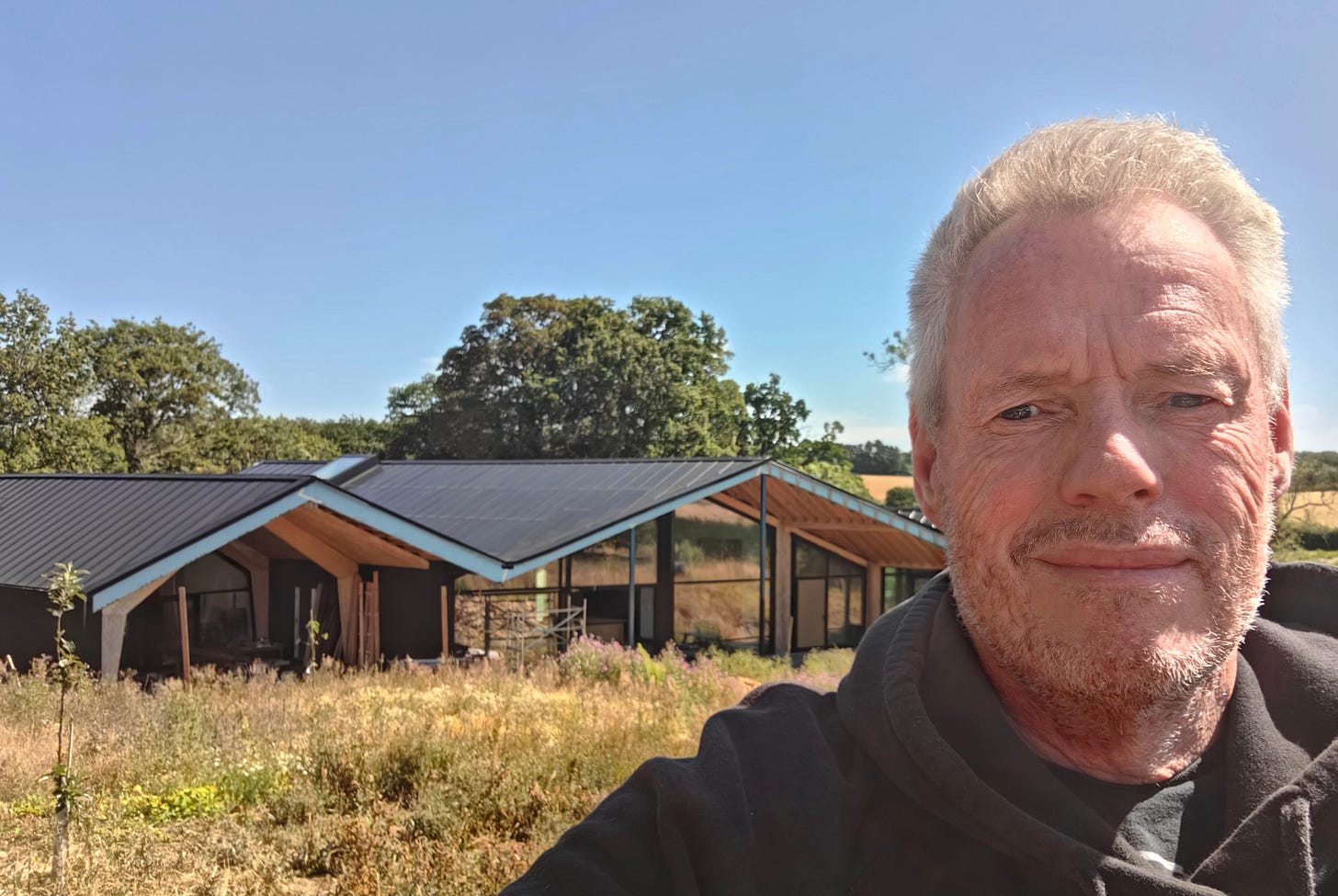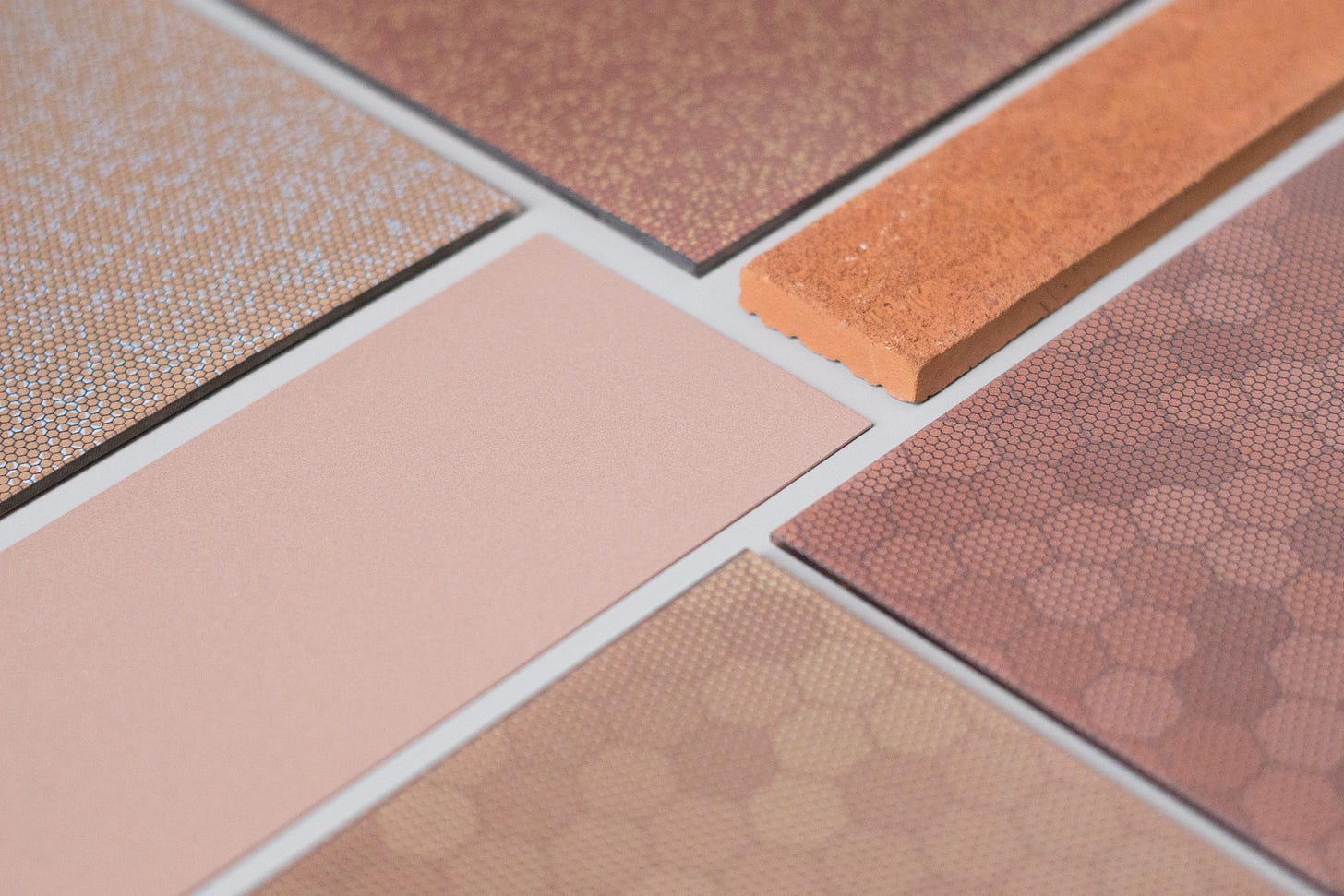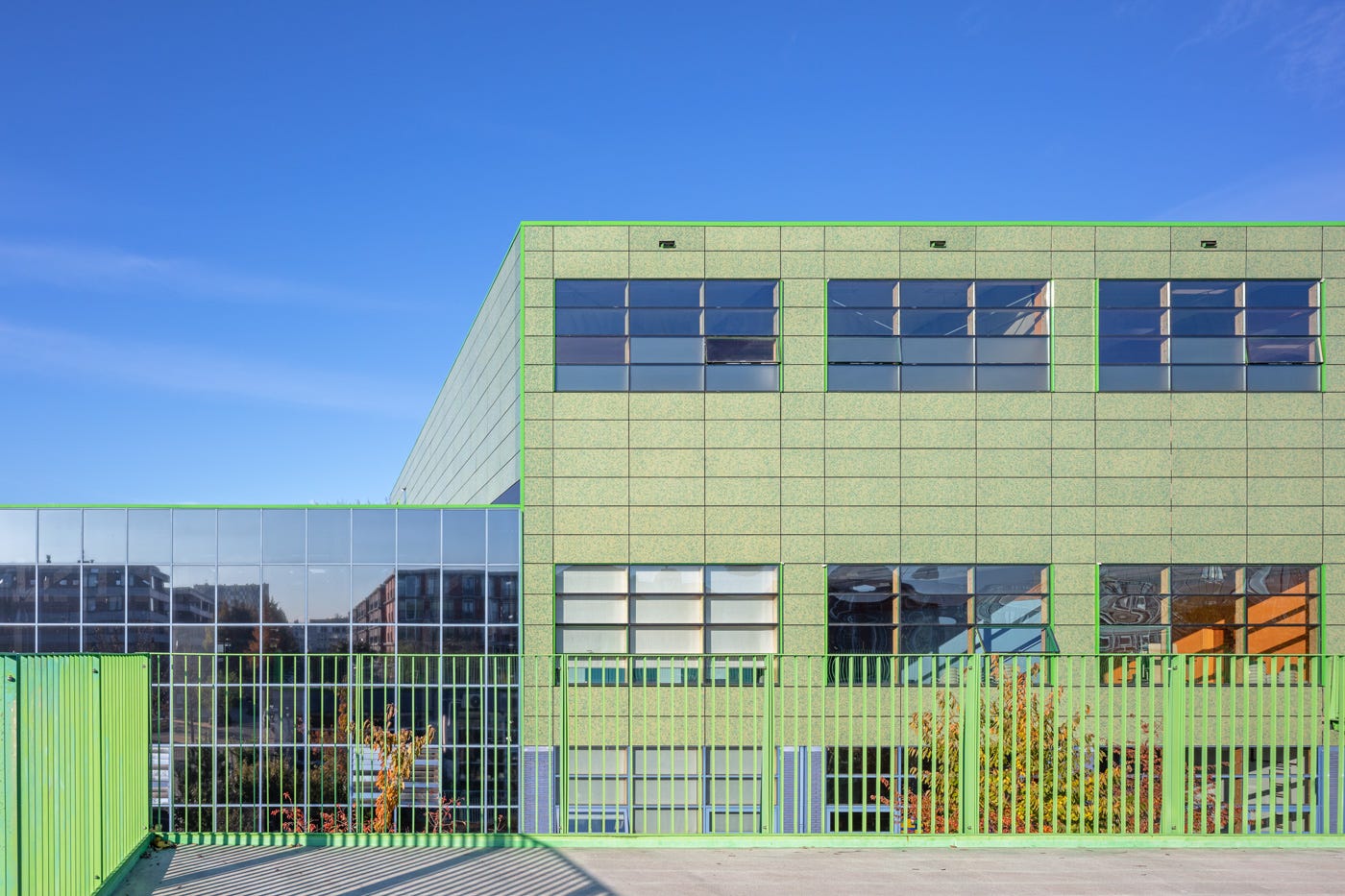The new solar: what colour panel would you like?
Don't forget to consider cost and efficiency, too
Hunched in the Warwickshire countryside is a giant eco-house – in stealth mode. Its three pitched roofs, sleek and black, seem idle. Inert. But this is a hard-working solar roof in disguise. “We can make a beautiful house and nobody will know it is in any sense an eco-house,” environmental consultant Duncan Eastland told his partner Liz Vernon when they set out to build the property back in 2020.
To that end, they turned to Roofit, an Estonian firm that makes energy-generating roofing sheets. Eastland chose black but Roofit currently offers solar roofing sheets in colours including pale green and copper brown, as well as custom options tailored to specific projects.
Eastland and Vernon built their home to a Passivhaus Premium standard. That means it generates far more electricity than it consumes – a total of 36 megawatt hours in 2024, says Eastland, who worked out the roof’s expected performance pre-installation. “The actual number generated is pretty much spot on with what my model predicted,” he says.
It’s a demonstration that serious solar installations can defy aesthetic expectations. No need to bolt clunky rectangles all over your roof. Solar companies are coming up with snazzy alternatives that can form part of the roof structure itself – or provide an ultra-modern, colourful façade. These solutions are usually more expensive and less efficient than standard solar panels. But, should they succeed at enchanting notoriously fussy architects, they could help solar become even more widely adopted than it already is.
Eastland and his partner’s £1.25 million house, featured on hit UK TV show Grand Designs in 2023, is not yet officially Passivhaus Premium certified. There’s still some paperwork to file to complete that process, explains Eastland: “Frankly, I’m procrastinating.” But the house is already exporting electricity to the grid.
Last year, the figure came to almost 28 megawatt hours, though Eastland notes that the total amount he can export is currently capped. Still, 28 megawatt hours is significant – enough to cover the average annual electricity consumption of 10 medium-sized UK homes. (And that’s with two, not all three, of the building’s pitched roofs generating electricity. One was fitted without solar-generating panels.)
‘Ugly’ panels?
Eastland enthuses about the latest developments in solar technology – from perovskite-based solar to windows that contain solar cells embedded within the glass. Besides those, companies also continue to develop solar tiles, designed to mimic existing roofs.
Fundamentally, looks matter, argues Eastland. “As a massive generalisation, I think most people think solar panels are ugly – and most people don’t want to stick something ugly on their house,” he asserts. “So, yes, I think that is definitely a hurdle.”
In the Netherlands, a company called Solarix has developed a range of panels that come in various colours, patterns and textures. “The energy transition is needed, obviously,” says company spokeswoman Lonneke Wijnhoven. “But if you can make it into something beautiful, maybe you can hasten it.”
Research suggests that she might be right. A 2023 study examined the energy efficiency of coloured solar panels. “Even though energy is lost by using coloured filters, their use becomes indispensable for certain architects for aesthetic reasons,” the authors argued. Separately, a 2017 paper found that aesthetic concerns have impeded the rollout of solar in some locations in Southeast Asia.
And yet, the solar market is still dominated by traditional-style panels, which people are installing at an ever-increasing rate. A report published last year found that, while building-integrated photovoltaic systems continue to grow in popularity, they are far outpaced by the accelerating uptake of the more familiar, and generally more conspicuous, “attached systems” at present.
Solarix makes its panels by baking ceramic inks into glass during the toughening process. The lighter the colour, the more reflective the glass becomes and so the less efficient the panels will be – with losses of up to 50% in some cases, the company says. The maximum electrical output of the products ranges from 110-190 watts per square metre, depending on colour.
One installation on the external walls of a Dutch engineering firm, with 89 square metres of active panels, generates an average of 5.62 kilowatt hours annually, according to Solarix.
That’s 63 kilowatt hours per square metre, per year, which is well below what you might expect from a one square metre, roof-mounted, standard panel with 20% efficiency (which might get you somewhere between 100 and 180 kilowatt hours, depending on where you live and what the weather does during a given year). However, Wijnhoven says, “It’s not comparable to a solar panel. It’s a façade and solar in one – so your business case is different to a horizontal panel.”
This might work particularly well for schools, apartment blocks and office buildings rather than individual homes. One of the company’s latest installations features light green façade panels on a Dutch school called “The Frog”. The new panels replaced older, non-electricity generating boards that were a harsher shade of solid green. Although it’s less than 12 months old, this relatively large installation, consisting of 1,373 active panels, is expected to generate around 67 megawatt hours per year, Solarix says.
Bird-integrated photovoltaics
Wijnhoven says her firm is working on new colours and finishes, including a mother of pearl-like option. And, later this year, it plans to unveil a dummy panel featuring a nest box for birds.
I ask how much solar tech like this costs. Wijnhoven declines to disclose a figure, though she acknowledges that such panels are more expensive than standard ones. Building designers and owners must also consider fire safety regulations around cladding. “The regulatory environment in the UK remains somewhat more complex than in mainland Europe,” the company notes.
Many people have absolutely no objection to traditional solar panels – and such customers may reap the rewards of higher efficiencies from those devices. But who says everyone has to do things the same way? The fact that solar products are diversifying suggests that aesthetics remains important to people. And solar firms keep coming up with new ideas on that front.
“As more and more of those things happen, the wider the market will be, the more people will take them up – and I think that’s fantastic,” says Eastland.
Further reading on this week’s story
You can watch the full episode of Grand Designs featuring Eastland and his partner’s abode, via YouTube.
A paper published earlier this year in Nature Reviews Clean Technology, an academic journal, explores the as-yet largely untapped potential of the building-integrated photovoltaics market.
Thanks for reading! If you enjoyed this story, don’t forget to share it with your friends and colleagues. You can also subscribe to The Reengineer and follow me on Bluesky.






